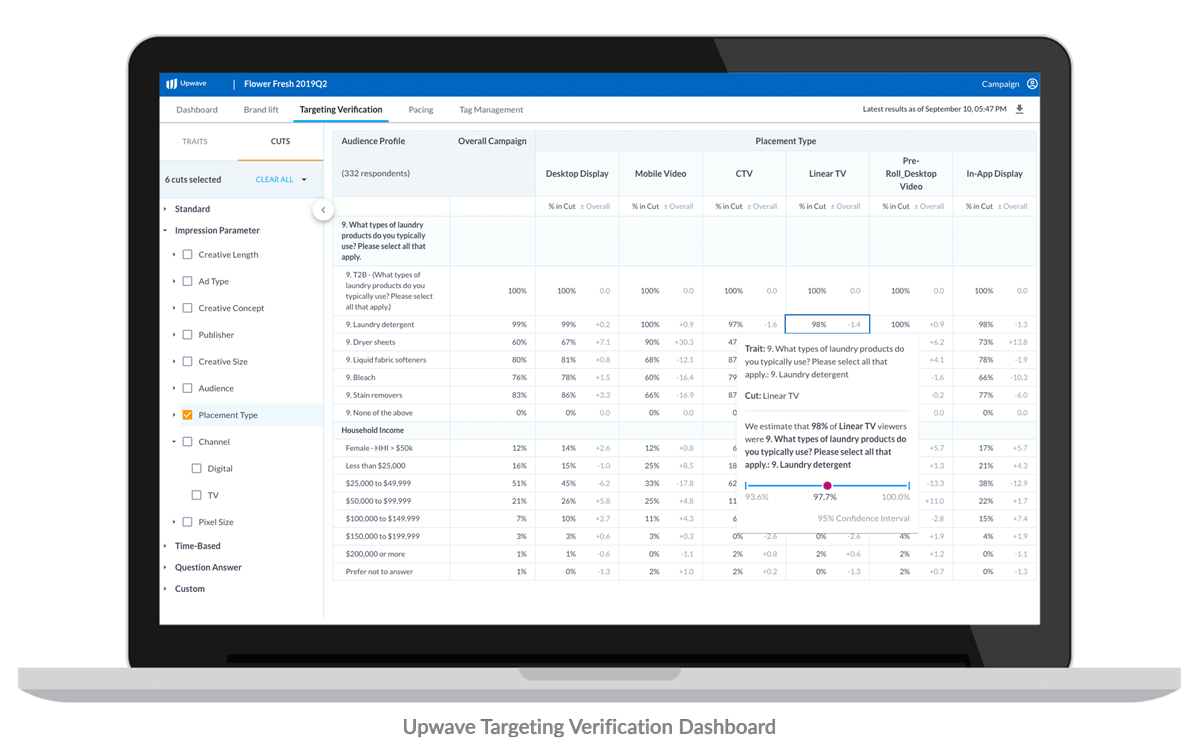Established brands often underestimate the need for brand marketing. It’s an understandable assumption — with high levels of brand awareness, why bother investing in brand campaigns? If enough people already know about your brand, won’t they continue to think highly of you – and buy your products – regardless of advertising?
But even the most iconic brands are not immune to brand decay – the decline of brand integrity over time. A recent Upwave analysis of household brands with 75-85% baseline awareness revealed that on campaigns where total digital media spend dropped from one quarter to the next, overall awareness levels dropped on average by 8 percentage points.
The brand decay that occurs due to slowed or halted advertising can have long-term detrimental effects on both consumer perception and the bottom line. According to Nielsen research, “on average, it takes three to five years to recover equity lost because of halted advertising, and long-term revenue can take a 2% hit for every quarter a brand stops advertising.”
Positive Brand Lift, But Flat Brand Trackers
The good news is, there are strategies to prevent brand decay. One early signal to look for is when brand lift is positive, but brand trackers remain flat. This is a common complaint of CMOs, and calls into question the accuracy of brand analytics.
When a brand sees positive brand lift but static brand trackers, it’s likely because the campaign isn’t penetrating the brand’s target audience, and non-reached consumers are experiencing brand decay.
Poorly Targeted Campaigns with “Brand Lift” Cause Brand Decay
That’s why it is critical to understand campaign audience penetration in real-time. Upwave’s Targeting Verification allows you to see who you’re reaching in terms of demographic and behavioral traits specific to your brand’s target audiences.
Brand marketers who understand brand decay no longer even look at brand lift metrics without audience penetration metrics for the same campaign, because lift metrics alone create a false sense of success.
